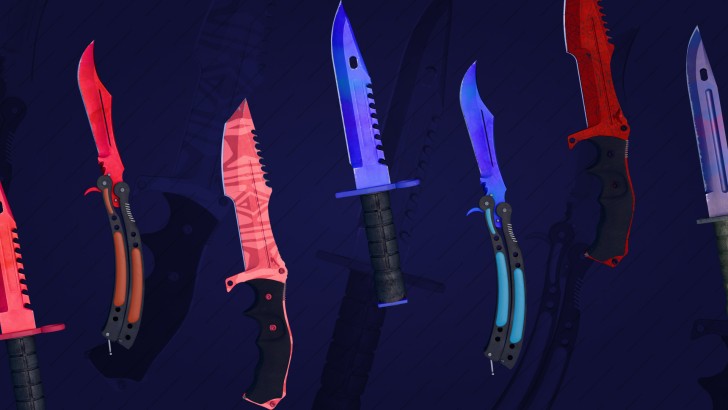Valve’s latest Counter-Strike 2 update has changed the game’s economy with a new knife and glove crafting system. Released in October 2025, this update lets players use the Trade-Up Contract to create high-tier cosmetic items. Before this, getting such items required opening hundreds of cases or spending thousands on the marketplace. The new feature has completely changed how players and traders get rare items.
Before the update, knives were among the rarest drops in CS2 and a key investment for traders. Now, players can combine five Covert-grade skins to craft a knife or pair of gloves from the same collections as those skins. This makes rare items easier to obtain but has also caused major changes and price swings in the skin-trading market.
How Knife Crafting Works in CS2
The new system builds on the existing Trade-Up Contract feature. Players can trade five Covert-tier (red) weapon skins to receive a knife or gloves from the same group of collections. If the traded skins are StatTrak™, the crafted item will also have StatTrak™, keeping the kill counter.
The final item is chosen randomly from the collections used in the trade. There’s still some luck involved, but it’s much more predictable than opening cases.
To craft, players open their inventory, choose five Covert skins, and sign the Trade-Up Contract. Once confirmed, the system instantly gives the new item. This quick process turns what used to be pure chance into a semi-controlled craft — adding both excitement and instability to the CS2 market.
Market Impact and Trader Losses
The new knife crafting system caused a major shock in the CS2 trading world. Within hours of the update, major marketplaces like Buff, SkinBaron, and CS.Money were flooded with knives and gloves losing their value. Items that once sold for over $1,000 dropped to a fraction of their price. Market trackers estimate that CS2’s total virtual economy fell from about $6 billion to $4.2 billion in a single day. According to TalkEsport, more than $1.8 billion in value disappeared almost overnight as players rushed to sell their items.
For many traders, the loss was not only financial but emotional. Knives had long been symbols of status and rarity in CS2. When Valve made them craftable, it disrupted the balance of supply and demand that traders relied on.
High-volume investors who owned rare knives like the Karambit | Crimson Web or Butterfly | Fade saw their portfolios drop by 60–70% within 24 hours. Some compared the event to a digital “bank run,” as panic selling and undercutting spread across the markets. Newer players enjoyed cheaper prices, but veteran traders called it a “total market reset.”
Analysts agree that Valve’s update permanently changed CS2’s economy. It made rare items more accessible but destroyed old value systems. Traders now face a new market where they must rebuild their strategies from the ground up.
Crafting Smart: How to Choose the Right Skins and Collections
With so many skins available for crafting, choosing the right collections matters. The Trade-Up Contract randomly picks the knife or gloves from the same collections as your input skins, so planning is important. Players often aim for popular collections like Prisma 2, Fracture, and Dreams & Nightmares, which include some of the best knife patterns in CS2.
Before you confirm a contract, check all possible outcomes. Valve does not offer refunds — once you click “Submit,” the trade is final. To make smart choices, visit the Skin.Club Wiki, where you can see all CS2 knife skins. It helps you decide which knives are worth crafting or collecting.
Smart players treat crafting as strategy, not luck.
Final Thoughts: A Turning Point for the CS2 Economy
The knife crafting update marks a big change in Counter-Strike 2. The market, once ruled by rarity and high prices, is now open to everyone. Many players see this as a positive step, a fair way to get rare knives without relying only on luck or large budgets.
For traders, though, the impact is harsh. Years of value disappeared within hours, and trust in CS2’s market stability has dropped. The new system challenges the idea that digital rarity always means lasting value.
Still, most players agree that the update brings new energy to the community. It encourages creativity, experimentation, and fresh strategies.
As things settle, one fact remains: the CS2 economy has changed forever. Whether you’re crafting your first knife or rebuilding your inventory, success now depends on adaptability and smart planning.
 Editorial staff
Editorial staff

 Editorial staff
Editorial staff


